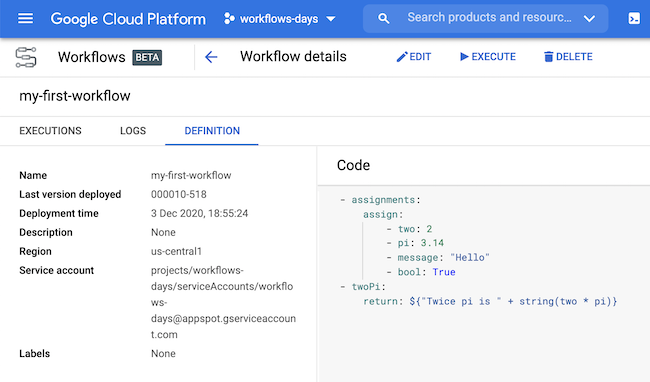Day 6 with Workflows — Arrays and dictionaries
So far, in this series of articles on Cloud Workflows, we have used simple data types, like strings, numbers and boolean values. However, it’s possible to use more complex data structures, like arrays and dictionaries. In this new episode, we’re going to use those new structures.
Arrays can be defined inline (like anArray) or spanning over several lines (like anotherArray):
- assignment:
assign:
- anArray: ["a", "b", "c"]
- anotherArray:
- one
- two
- output:
return: ${anArray[0] + anotherArray[1]}
The output step will return the string "atwo".

